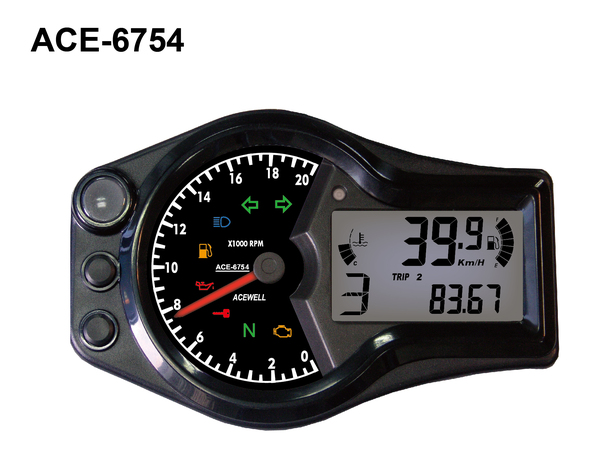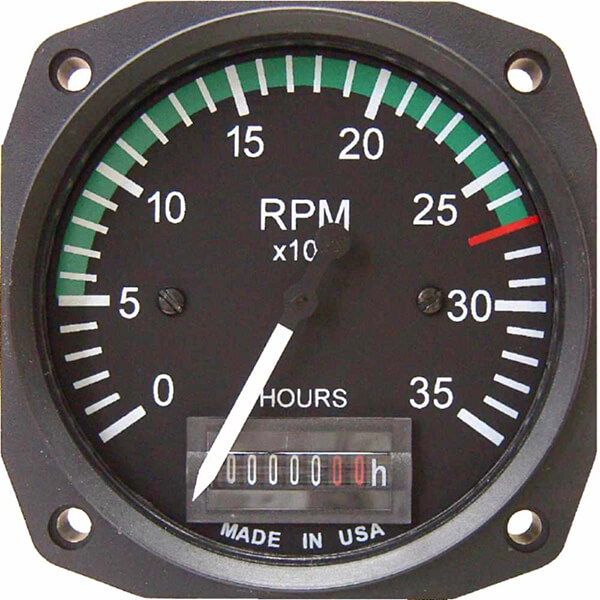Just How a Tachometer Helps Display Engine Health And Wellness and Efficiency
Just How a Tachometer Helps Display Engine Health And Wellness and Efficiency
Blog Article
Unlocking the Tricks of Tachometers: Whatever You Required to Find Out About This Important Tool in Your Automobile
Recognizing the intricacies of tachometers can provide important understandings right into your car's efficiency and upkeep requirements. From determining engine rate to deciphering the data it provides, tachometers work as an important tool for car owners and lovers alike. By unraveling the mysteries behind this important tool, you can unlock a riches of details that can improve your driving experience and ensure the longevity of your lorry.
Relevance of Tachometers
The relevance of tachometers lies in their capacity to offer essential real-time information regarding an engine's rotational rate, enabling for exact monitoring and upkeep of equipment. By determining the revolutions per min (RPM) of an engine's crankshaft, tachometers use valuable understandings into the engine's efficiency - tachometer. This data is important for making sure that the engine runs within its ideal variety, preventing potential damages from over-revving or underperforming
Tachometers play an essential role in assisting operators and service technicians identify any kind of anomalies in the engine's speed, which can show concerns such as fuel ineffectiveness, mechanical troubles, or too much stress on the engine. By immediately identifying these concerns via tachometer readings, maintenance can be carried out proactively, avoiding pricey repair work and downtime in the future.
Moreover, tachometers are specifically vital in high-performance automobiles and machinery, where precise control over engine rate is needed for optimal operation. Competing cars and trucks, airplane, and commercial devices count on tachometers to deliver peak efficiency while keeping security criteria. In significance, tachometers are not simply tools for measuring speed but vital tools for guaranteeing the smooth and reliable operation of engines throughout various applications.
How Tachometers Procedure Engine Speed
Utilizing sensors that detect the regularity of electrical pulses produced by the engine's ignition system, tachometers precisely gauge the rotational speed of an engine. By checking the rate at which these pulses are received, tachometers supply real-time responses on exactly how quickly the engine's crankshaft is rotating per min, generally referred to as changes per minute (RPM)
The tachometer's sensing unit, frequently linked to the engine's ignition coil or ignition system cables, grabs the electric signals generated each time a cylinder fires. These signals are then exchanged RPM analyses showed on the scale or tool cluster within the vehicle driver's sight. Tachometers can be analog or digital, with modern-day vehicles typically featuring digital display screens for precise and instant RPM readings.
This details is crucial for drivers to comprehend the engine's efficiency, protect against over-revving, maximize equipment changing, and make sure reliable fuel usage. By accurately determining engine speed, tachometers play a crucial function in aiding chauffeurs run their automobiles securely and effectively.
Translating Tachometer Analyses
Having a clear understanding of how tachometers determine engine rate sets Full Article the structure for successfully interpreting the RPM readings displayed. Analyzing tachometer readings is essential for optimal car performance and engine health. RPM (Changes Per Minute) analyses on the tachometer indicate the speed at which the engine's crankshaft is turning. When the engine is idling, the tachometer needle commonly rests around 600-1000 RPM, depending on the automobile. As you increase, the RPM will certainly increase, reflecting the engine's higher rotational rate. When changing equipments in a manual transmission lorry, the RPM will go down as you engage the clutch and modification equipments, after that rise again as you speed up in the new equipment. Monitoring the tachometer can aid you figure out the most efficient shifting indicate take full advantage of fuel economy and engine power. Additionally, uncommon variations or continually high RPM readings could show possible issues with the engine that might call for professional focus. By taking note of the tachometer analyses and understanding exactly how YOURURL.com to translate them, you can guarantee your lorry runs efficiently and efficiently.


Tips for Utilizing Tachometers Efficiently
To enhance driving performance and maximize engine efficiency, what trick techniques can be executed for effectively using tachometers? Tachometers are crucial devices that give real-time comments on engine speed, enabling chauffeurs to make enlightened decisions for better performance - tachometer. Below are some pointers for making use of tachometers effectively:
Recognizing Optimal RPM Variety: Acquaint yourself with the ideal RPM (Changes Per Min) array for your lorry. This variety ranges different cars and trucks and is normally suggested in the proprietor's handbook. Keeping the engine within this range can improve fuel efficiency and prolong the engine's life-span.
Changing Gears at the Right Time: Use the tachometer to establish the best time to change equipments. Purpose to shift equipments when the RPM gets to the optimal range for the following gear.
Monitoring Engine Stress And Anxiety: High RPMs for extended periods can stress the engine. Keep an eye on find out here now the tachometer to avoid over-revving, specifically throughout acceleration or when carrying heavy lots.
Tachometers and Vehicle Maintenance
When thinking about lorry maintenance, tachometers play a vital role in checking engine performance and detecting possible problems. Tachometers give crucial data on engine rate, enabling motorists and auto mechanics to make certain that the engine is running within the recommended RPM variety. Routinely monitoring the tachometer readings can help determine troubles such as engine misfires, damaged stimulate plugs, or concerns with the gas delivery system. By taking notice of the tachometer, chauffeurs can stop too much pressure on the engine, which can bring about expensive fixings down the line.
Along with detecting prospective problems, tachometers can also assist in optimizing fuel effectiveness. By keeping the engine speed within the ideal range, chauffeurs can enhance their gas mileage and decrease gas usage. This not only profits the motorist's wallet yet also adds to ecological preservation by reducing harmful discharges.
Verdict

Report this page